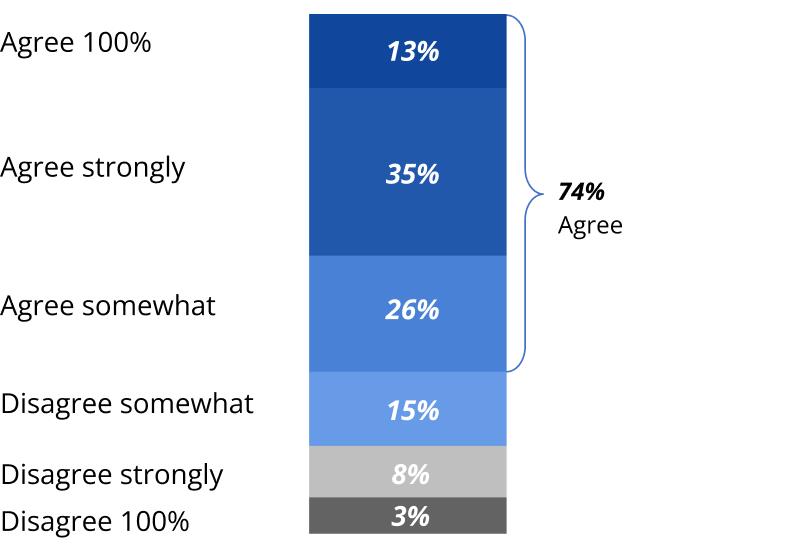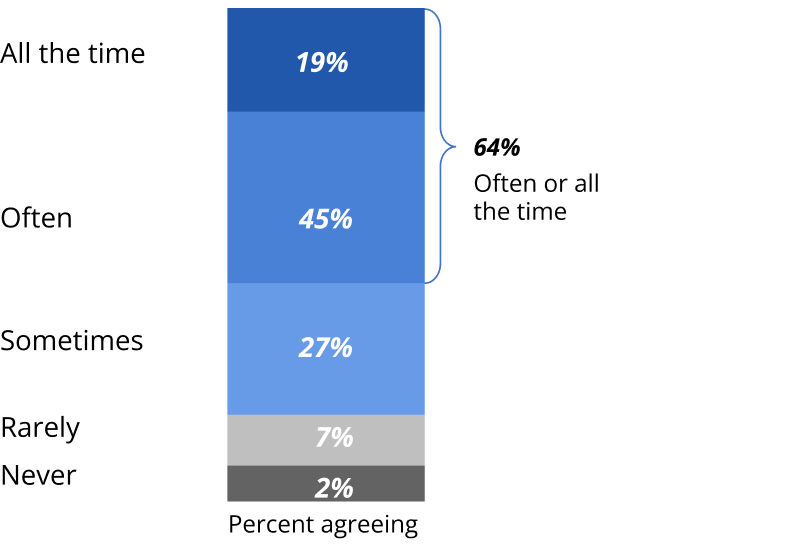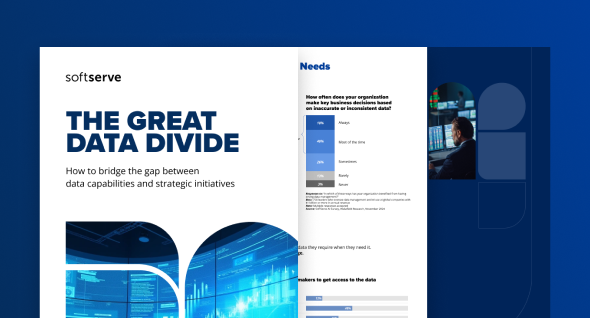Gen AI and Data Strategy: Maximizing Business Opportunities
Why do companies struggle to align their Gen AI investments with their data strategies? We investigated
Applications powered by Generative AI represent a golden opportunity for businesses –– and an immense challenge. The hype around the novel technology created a mad rush to jumpstart projects and develop flashy PoCs. The problem? Most companies had no real plan to follow up on these expensive endeavors. Instead of ROI and efficiency, they ended up with sunk costs and confused teams.
Indeed, according to a 2024 commissioned global study conducted by Forrester Consulting on behalf of SoftServe, just 22% of participating organizations reported success in implementing Gen AI across their enterprise. The culprit, as we learned from a subsequent survey, was underdeveloped data strategies.
Read on to learn more about what we discovered.

The critical intersection of Gen AI and data
There are myriad reasons why projects putter out. To understand why so many Gen AI projects failed to take off, we partnered with Wakefield Research to conduct a study of 750 business and IT leaders from billion-dollar companies.
An overwhelming 98% of businesses concur that foundational data strategy changes are pivotal to harness AI's capabilities. Moreover, 73% believe significant updates or a complete overhaul of data strategy is necessary. The point is that Gen AI and data have a mutually beneficial relationship. Stronger data results in more robust Gen AI implementations, while business-aligned Gen AI applications turn unused data into valuable assets. The key is finding the balance to create a virtuous cycle.
My organization often jumps into Al with pilot initiatives that lack a clear plan for scaling to meet business goals.
Despite the clear synergies between data and Gen AI, many businesses flip the script, focusing on Gen AI initiatives while neglecting underlying data strategies. According to our study with Wakefield Research, 73% of business and tech leaders believe their company sacrificed valuable data and analytics opportunities in the rush to adopt Gen AI. This phenomenon is even more pronounced among VPs (82%).
How often are Al solutions implemented at your organization without first establishing a firm business use case to guide the initiatives?
This oversight comes with tangible consequences: 64% of business leaders admit that their companies frequently deploy AI solutions without a viable business use case, and an alarming 74% have launched AI pilot programs without a plan to scale for meaningful business outcomes. That mismatch betrays a serious lack of alignment.
The path forward: synchronized data and AI investments
The key to correcting this mismatch lies in robust data governance, focusing on availability, quality, and integration. However, prioritizing data-supported, ROI-driven Gen AI applications can also catalyze quick business wins and sustainable revenue growth. Such an approach builds data maturity and paves the way for future projects.
Refining a robust data strategy is the prerequisite to harnessing the power of Gen AI effectively. Doing so not only boosts efficiency but also delivers a competitive advantage that businesses can ill afford to ignore in today's fast-paced digital economy, while protecting against sunken investments.
Are you ready to align your data strategy with ROI-bringing Gen AI projects? Learn more insights and best practices in our full research paper.




